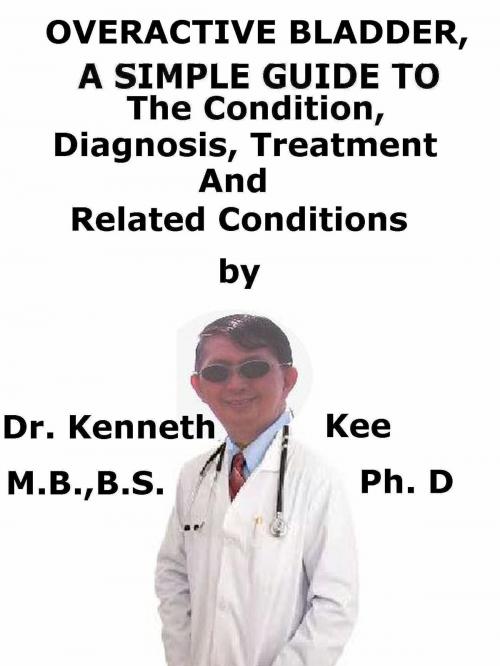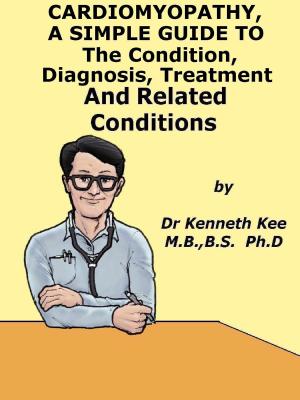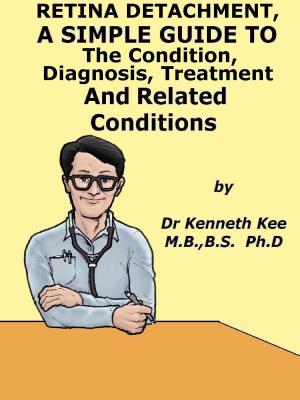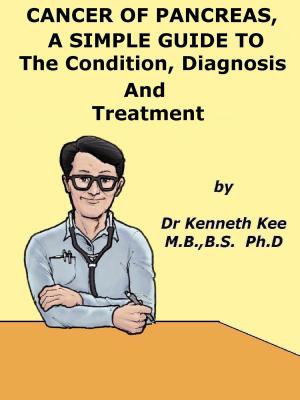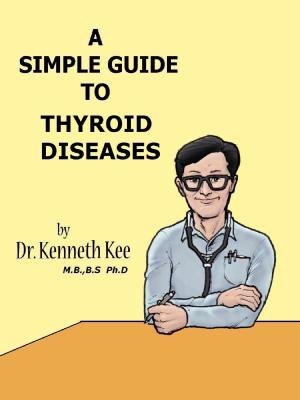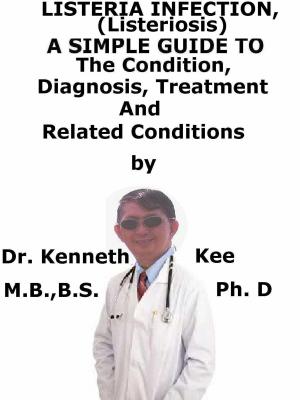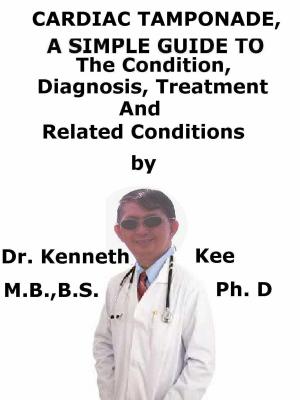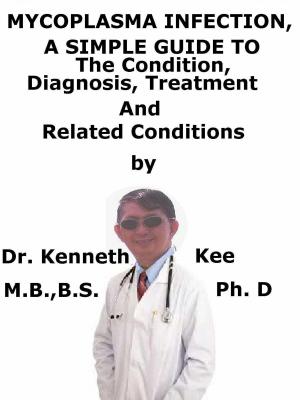Overactive Bladder, A Simple Guide To The Condition, Diagnosis, Treatment And Related Conditions
Nonfiction, Health & Well Being, Medical, Specialties, Urology| Author: | Kenneth Kee | ISBN: | 9781370834419 |
| Publisher: | Kenneth Kee | Publication: | February 5, 2017 |
| Imprint: | Smashwords Edition | Language: | English |
| Author: | Kenneth Kee |
| ISBN: | 9781370834419 |
| Publisher: | Kenneth Kee |
| Publication: | February 5, 2017 |
| Imprint: | Smashwords Edition |
| Language: | English |
The Overactive Bladder is defined as urgency to pass urine with or without urge incontinence and usually with frequency and nocturia.
Overactive bladder is a medical disorder in which the bladder squeezes urine out at the wrong time.
An overactive bladder is present if you have two or more of the following symptoms:
1. Urinate eight or more times a day or two or more times at night
2. Have the sudden, strong urge to urinate immediately
3. Leak urine during a sudden, strong urination urge
4. Have incontinence which is the loss of bladder control.
OAB maybe categorized into 2 forms:
1. OAB wet is OAB with incontinence.
2. OAB dry is OAB without incontinence.
OAB symptoms are more common in females than in males.
The possible causes of OAB are:
1. Weak bladder outlet sphincter
2. Weak Pelvic Floor muscles
Other causes:
1. Uterovaginal prolapse
2. Urinary infections
3. Prostate enlargement in men
4. Nerve problems or too much caffeine or too much fluid can also cause it
Symptoms are an urgent sensation to go to the toilet, frequently going to the toilet, and sometimes leaking urine before you reach the toilet (urge incontinence).
1. Frequency of urine
This is frequent going to the toilet, more than seven times a day.
2. Urgency of urine
This means that you may feel an urgent urge to pass urine.
There is inability to delay going to the toilet.
3. Nocturia
This means getting up to go to the toilet more than once at night.
4. Anxiety and depression
This is a leakage of urine even before reaching the toilet when you have a feeling of urgency.
Diagnosis is based on these symptoms and:
Urine tests
Measurements of post-voidal residual urine in the bladder
Urodynamic tests
Ultrasound of bladder
MRI of bladder
Cystoscopy
Treatment is by:
Removal of urinary irritant such as caffiene, alcohol
Physiotherapy such as pelvic floor muscle exercises
Bladder training for at least 6 weeks
Medicines such as anticholinergics, Desmopressin and the newer Mirabegon
Injection of bladder neck with Botox
Sacral nerve stimulation, Bladder diversion or Augmentation cystoplasty to strengthen the bladder
TABLE OF CONTENT
Introduction
Chapter 1 Overactive Bladder
Chapter 2 Causes
Chapter 3 Symptoms
Chapter 4 Diagnosis
Chapter 5 Treatment
Chapter 6 Prognosis
Chapter 7 Urinary Incontinence
Chapter 8 Benign Prostate Hypertrophy
Epilogue
The Overactive Bladder is defined as urgency to pass urine with or without urge incontinence and usually with frequency and nocturia.
Overactive bladder is a medical disorder in which the bladder squeezes urine out at the wrong time.
An overactive bladder is present if you have two or more of the following symptoms:
1. Urinate eight or more times a day or two or more times at night
2. Have the sudden, strong urge to urinate immediately
3. Leak urine during a sudden, strong urination urge
4. Have incontinence which is the loss of bladder control.
OAB maybe categorized into 2 forms:
1. OAB wet is OAB with incontinence.
2. OAB dry is OAB without incontinence.
OAB symptoms are more common in females than in males.
The possible causes of OAB are:
1. Weak bladder outlet sphincter
2. Weak Pelvic Floor muscles
Other causes:
1. Uterovaginal prolapse
2. Urinary infections
3. Prostate enlargement in men
4. Nerve problems or too much caffeine or too much fluid can also cause it
Symptoms are an urgent sensation to go to the toilet, frequently going to the toilet, and sometimes leaking urine before you reach the toilet (urge incontinence).
1. Frequency of urine
This is frequent going to the toilet, more than seven times a day.
2. Urgency of urine
This means that you may feel an urgent urge to pass urine.
There is inability to delay going to the toilet.
3. Nocturia
This means getting up to go to the toilet more than once at night.
4. Anxiety and depression
This is a leakage of urine even before reaching the toilet when you have a feeling of urgency.
Diagnosis is based on these symptoms and:
Urine tests
Measurements of post-voidal residual urine in the bladder
Urodynamic tests
Ultrasound of bladder
MRI of bladder
Cystoscopy
Treatment is by:
Removal of urinary irritant such as caffiene, alcohol
Physiotherapy such as pelvic floor muscle exercises
Bladder training for at least 6 weeks
Medicines such as anticholinergics, Desmopressin and the newer Mirabegon
Injection of bladder neck with Botox
Sacral nerve stimulation, Bladder diversion or Augmentation cystoplasty to strengthen the bladder
TABLE OF CONTENT
Introduction
Chapter 1 Overactive Bladder
Chapter 2 Causes
Chapter 3 Symptoms
Chapter 4 Diagnosis
Chapter 5 Treatment
Chapter 6 Prognosis
Chapter 7 Urinary Incontinence
Chapter 8 Benign Prostate Hypertrophy
Epilogue
